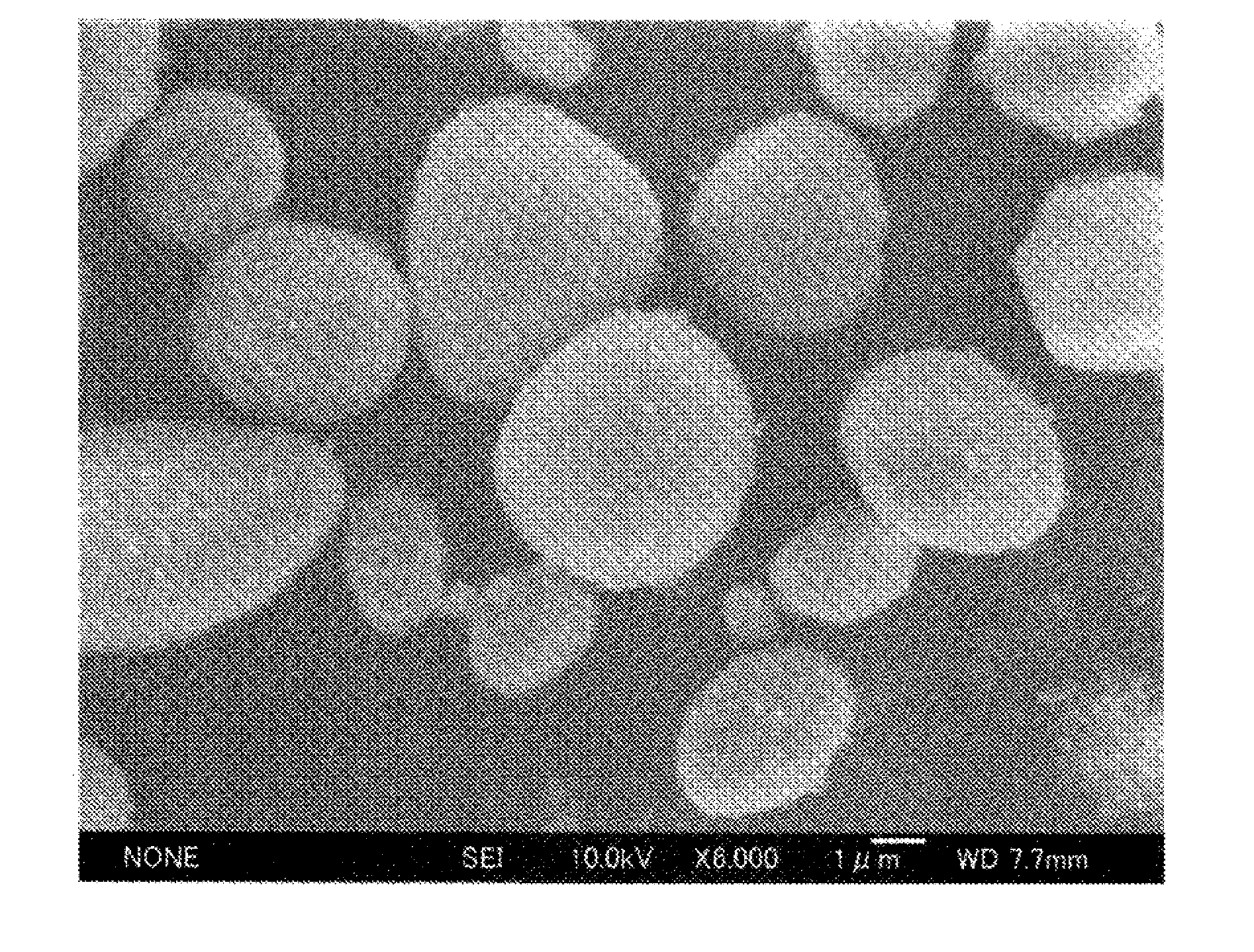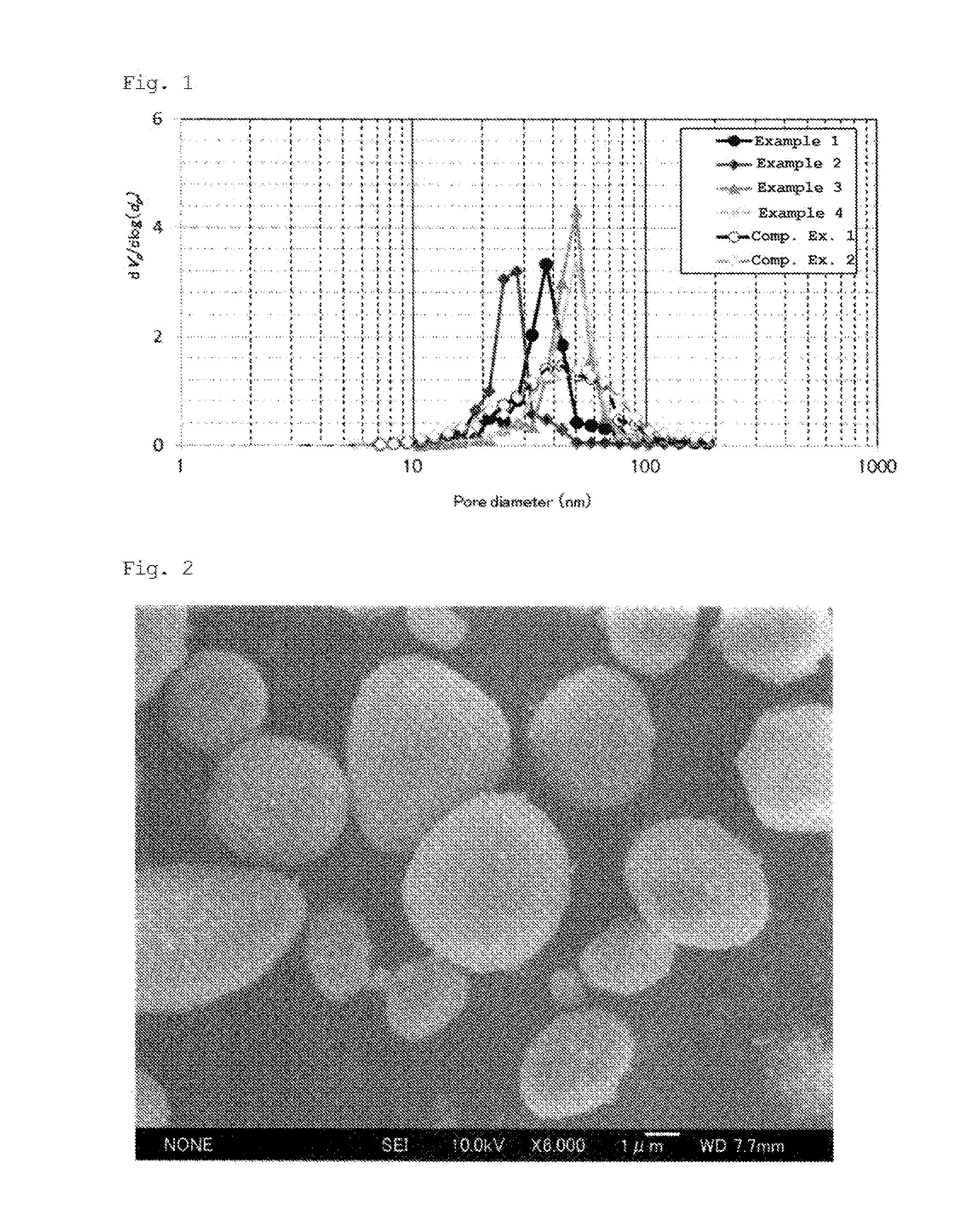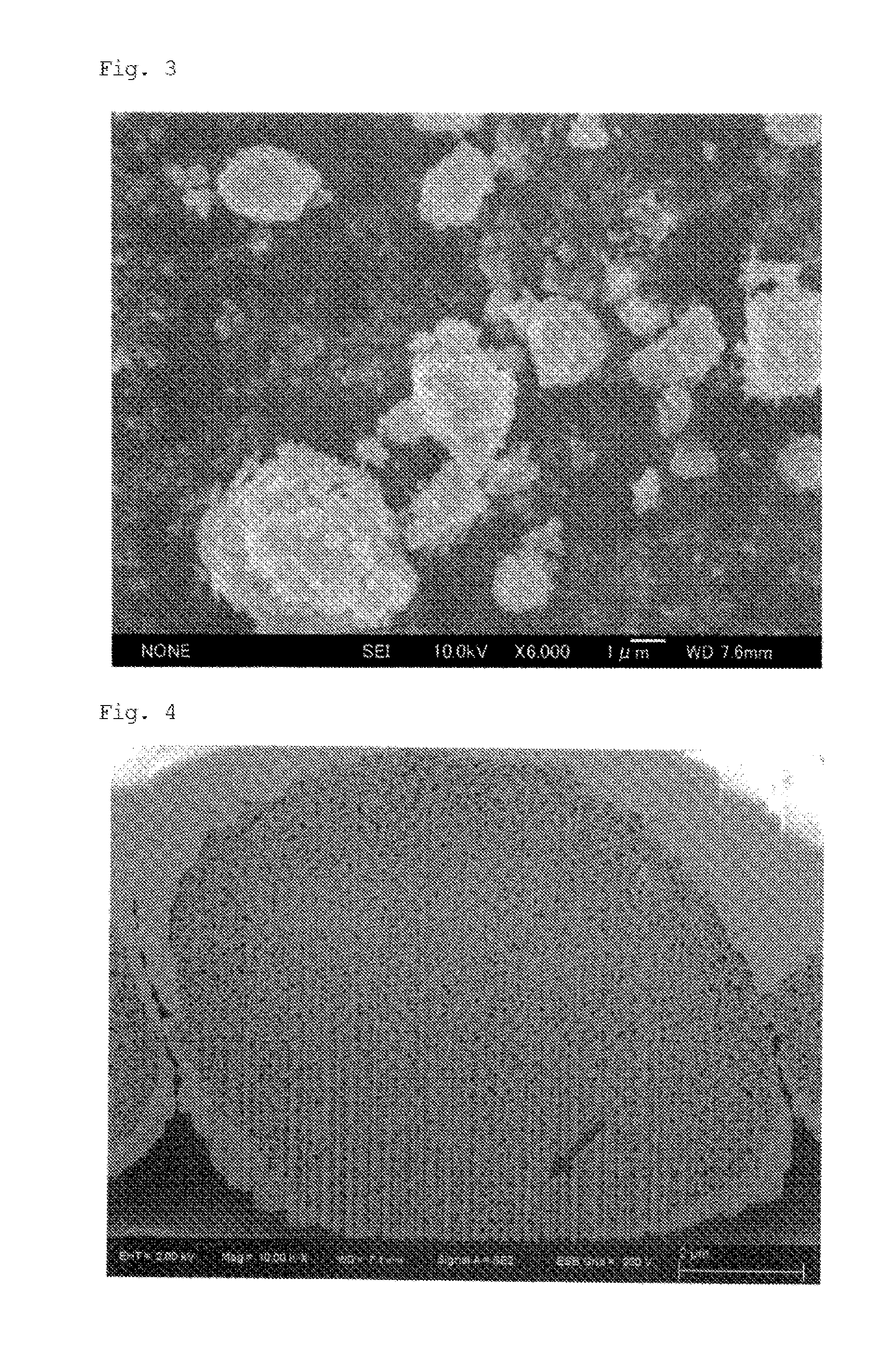Zirconia-based porous body and method for producing same
a zirconia-based, porous body technology, applied in the direction of catalyst activation/preparation, physical/chemical process catalysts, metal/metal-oxide/metal-hydroxide catalysts, etc., can solve the problem of not achieving sufficient heat resistance, difficult to obtain stable catalytic performance under high temperature conditions, and insufficient heat resistance, etc. problem, to achieve the effect of excellent heat resistance and high specific surface area
- Summary
- Abstract
- Description
- Claims
- Application Information
AI Technical Summary
Benefits of technology
Problems solved by technology
Method used
Image
Examples
example 1
[0098]213 g of a 25% aqueous sodium sulfate solution and 450 g of an aqueous zirconium oxychloride solution (ZrO2 basis: 16%) were separately heated to 95° C. Thereafter, the heated aqueous solutions were brought into contact and mixed with each other for a period of 3 hours in such a manner as to maintain the weight ratio of SO42− / ZrO2 in the liquid mixture at 0.50, thereby obtaining a basic zirconium sulfate-containing reaction liquid. The obtained basic zirconium sulfate-containing reaction liquid was kept at 95° C. for 4 hours for aging to thereby obtain a basic zirconium sulfate.
[0099]Subsequently, the aged basic zirconium sulfate-containing reaction liquid was cooled to an ordinary temperature, and 105 g of an aqueous cerium nitrate solution (CeO2 basis: 20%), 8.5 g of an aqueous lanthanum nitrate solution (produced by Wako Pure Chemical Industries, Ltd.) (La2O2 basis: 20%), and 26.5 g of an aqueous neodymium nitrate solution (Nd2O3 basis: 20%) were added thereto and uniformly...
example 2
[0109]157 g of a 25% aqueous sodium sulfate solution and 331 g of an aqueous zirconium oxychloride solution (ZrO2 basis: 16%) were separately heated to 97° C. Thereafter, the heated aqueous solutions were bought into contact and mixed with each other for a period of 3 hours in such a manner as to maintain the weight ratio of SO42− / ZrO2 in the liquid mixture to be 0.50, thereby obtaining a basic zirconium sulfate-containing reaction liquid. The obtained basic zirconium sulfate-containing reaction liquid was kept at 95° C. for 4 hours for aging to thereby obtain a basic zirconium sulfate.
[0110]Subsequently, the aged basic zirconium sulfate-containing reaction liquid was cooled to room temperature. Thereafter, 200 g of an aqueous cerium nitrate solution (CeO2 basis: 20%) and 35 g of an aqueous lanthanum nitrate solution (La2O3 basis: 20%) were added thereto and uniformly mixed.
[0111]The resulting liquid mixture was neutralized with a 25% aqueous sodium hydroxide solution to a pH of 13 ...
example 3
[0114]266 g of a 25% aqueous sodium sulfate solution and 563 g of an aqueous zirconium oxychloride solution (ZrO2 basis: 16%) were separately heated to 95° C. Thereafter, the heated aqueous solutions were bought into contact and mixed with each other for a period of 3 hours in such a manner as to maintain the weight ratio of SO42− / ZrO2 in the liquid mixture to be 0.50, thereby obtaining a basic zirconium sulfate-containing reaction liquid. The obtained basic zirconium sulfate-containing reaction liquid was kept at 96° C. for 4 hours for aging to thereby obtain a basic zirconium sulfate.
[0115]Subsequently, the aged basic zirconium sulfate-containing reaction liquid was cooled to an ordinary temperature. Thereafter, 45 g of an aqueous lanthanum nitrate solution (La2O3 basis: 20%) was added thereto and uniformly mixed.
[0116]The resulting liquid mixture was neutralized with 25% aqueous ammonia to a pH of 10 or more to produce a hydroxide precipitate.
[0117]The obtained hydroxide precipit...
PUM
| Property | Measurement | Unit |
|---|---|---|
| pore diameter distribution | aaaaa | aaaaa |
| specific surface area | aaaaa | aaaaa |
| pore diameter | aaaaa | aaaaa |
Abstract
Description
Claims
Application Information
 Login to View More
Login to View More - R&D
- Intellectual Property
- Life Sciences
- Materials
- Tech Scout
- Unparalleled Data Quality
- Higher Quality Content
- 60% Fewer Hallucinations
Browse by: Latest US Patents, China's latest patents, Technical Efficacy Thesaurus, Application Domain, Technology Topic, Popular Technical Reports.
© 2025 PatSnap. All rights reserved.Legal|Privacy policy|Modern Slavery Act Transparency Statement|Sitemap|About US| Contact US: help@patsnap.com



